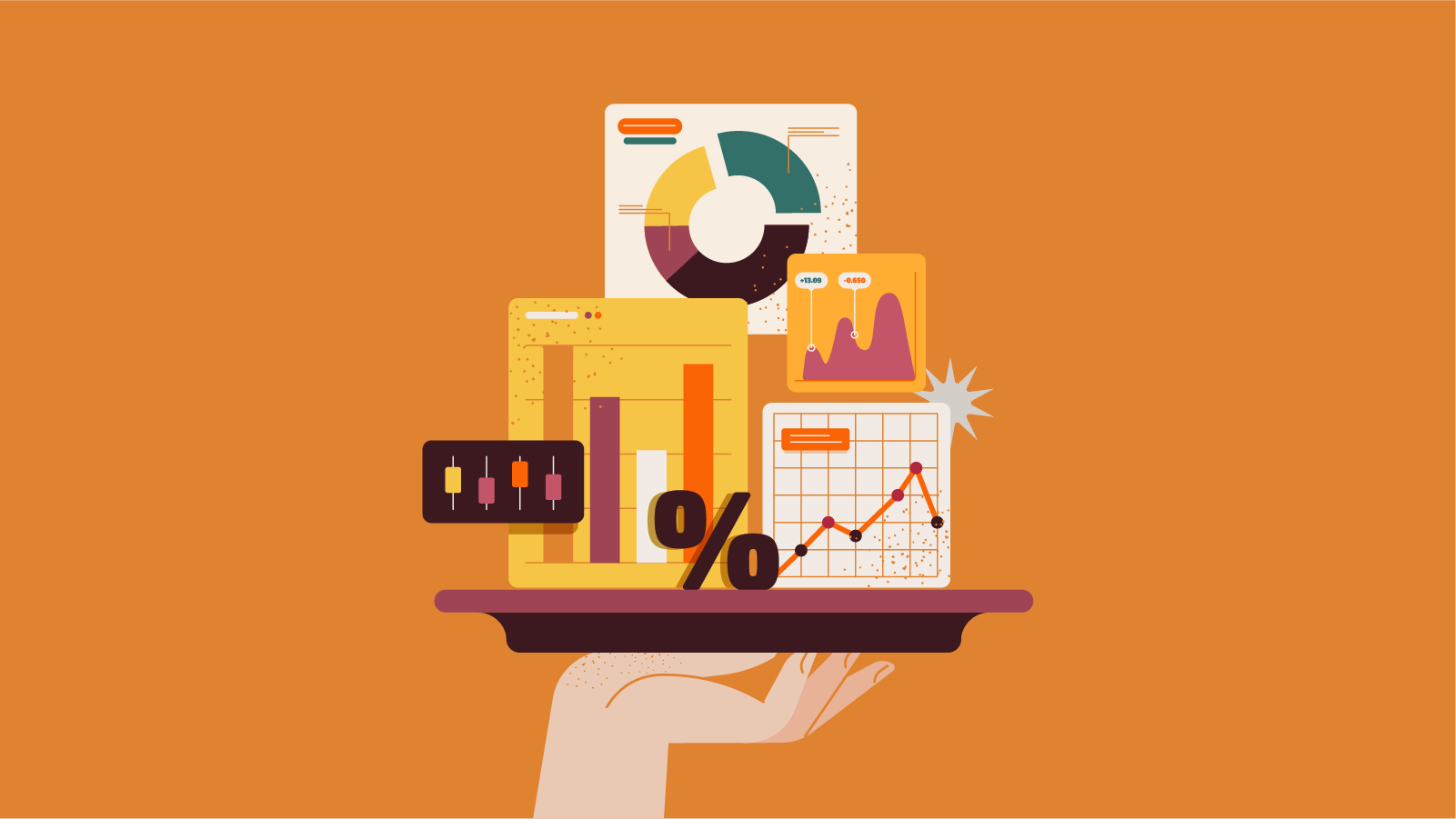How do you think, is there any opportunity in today’s world to process all possible information related to your business? Is it possible to get accurate predictions about its development and prevent risks? And can you, as a business owner, empower your team with simple data?
The answer is yes. For many years, large corporations have been using data for their own purposes. In today’s world, information has become the main capital, so the philosophers of the new Internet are against the use of personal data. And that is why it is so difficult to survive in a competitive environment without the help of experienced data scientists.
In this article, we will look at data analysis as a tool for achieving goals and a way to optimize business processes. We will also talk about the choice of data analytics tools, their main advantages and disadvantages, as well as determine which features are critical for such software. So, let’s start our journey right now!
What Is Data Analytics?
First things first, we must figure out what data analytics is. This is the process of examining, cleaning, transforming, and interpreting data to extract valuable insights, patterns, and trends. Data analysis involves the use of various techniques, tools, and technologies to analyze large sets of data, often with the goal of making informed decisions, solving problems, or optimizing processes.
Data analytics may include a wide range of activities. Here are some of the most common.
Data collection | The fundamental part of data analysis is gathering data from various sources, which can include databases, sensors, websites, social media, and so on. |
Data cleaning and preparation | After gathering information, specialists must ensure that collected data is high-quality, relevant, and reliable. So, analysts check if it is accurate, complete, and formatted correctly for analysis. This may involve removing duplicates, handling missing values, and standardizing data. |
Data cleaning and preparation | After gathering information, specialists must ensure that collected data is high-quality, relevant, and reliable. So, analysts check if it is accurate, complete, and formatted correctly for analysis. This may involve removing duplicates, handling missing values, and standardizing data. |
Data transformation | This is the time for converting and structuring information for data analysis. The process may involve aggregating data, creating new variables, or changing data formats. |
Data analysis | It means applying statistical, mathematical, and computational techniques to the prepared data to uncover meaningful insights. This can include descriptive statistics, data mining, machine learning, and more. |
Data visualization | Here, specialists present the results of data analysis in a visual format, such as charts, graphs, and dashboards, to make it easier for stakeholders to understand and interpret the findings. |
Predictive analytics | We will discuss this process in more detail later, but in two words, this is all about using historical data and statistical models to make predictions about future events or trends. This is valuable for forecasting and risk assessment. |
Prescriptive analytics | It includes recommending actions or strategies based on the insights gained from data analysis. It helps in decision-making and optimizing processes. |
Big Data Analytics | Here, specialists work with extremely large and complex datasets, often using distributed computing and specialized tools to process and analyze data at scale. |
Business Intelligence (BI) | This is the process of using data analytics to support business decision-making by providing real-time or near-real-time insights into an organization’s performance and operations. |
Data analytics is widely popular in different fields and industries. Whether it is mobile app development or website creation, structured and valuable information is a must. It plays a crucial role in helping organizations make successful decisions, identify opportunities for improvement, detect anomalies, and gain a competitive advantage.
Why Is Data Analytics Important?
In the new digital world, data has a huge impact and is incredibly important. It is generated at an exceptional speed, rate, and scale, and such an explosion presents both opportunities and challenges for organizations of different industries and sizes.
Data analysis is the key to harnessing the potential within this vast sea of information. Data analytics is not just a buzzword but a powerful and transformative tool that is revolutionizing decision-making processes across industries. Let’s take a closer look at the reasons why data analytics is so crucial.
Successful and informed decision-making
As we already mentioned, the main advantage data analysis can bring to the table is the ability to drive informed decision-making. In any context, whether personal, professional, or societal, making decisions without relevant information is similar to going through the dark wood with no navigation.
Data analytics becomes business compas by providing valuable insights derived from data. Decisions ranging from product development and marketing strategies to supply chain optimization and financial planning rely on data-driven insights. Companies that leverage data analytics can make more accurate forecasts, identify market trends, and respond to changing consumer preferences with agility.
Improved efficiency and productivity
Data analysis tools help to streamline business processes and enhance efficiency. It identifies bottlenecks and automates repetitive tasks, which is extremely important for companies with complex operations. Doing so allows organizations to operate more smoothly and with greater productivity.
For instance, in healthcare, data integration and analytics can help hospitals and clinics optimize patient care pathways. Proper analysis of patient data provides opportunities for improving treatment plans, reducing hospital readmissions, and improving overall patient outcomes.
Real competitive advantage
Data is a significant asset, especially if it is well-structured and relevant. Modern data analysis tools help better understand market dynamics, customer behavior, and possible opportunities, ultimately boosting business success.
In the retail sector, for example, data analytics helps companies personalize customer experiences and provide more suitable offers. Working with purchase history and online behavior allows retailers to use tailored recommendations and promotions to enhance customer loyalty and boost sales.
Risk management and mitigation
Data analytics software plays a vital role in risk assessment, management, and mitigation. It helps identify potential risks, vulnerabilities, and irregularities. Based on this information, business owners can choose proper proactive measures to minimize adverse outcomes.
There are thousands of examples of using analytics and business intelligence in very different industries, but the most striking one is finance.
Here, working with data and AI helps to detect fraudulent activities and improve security measures. Analyzing transaction data and customer behavior allows financial institutions to spot unusual patterns and take preventive action to protect both themselves and their customers.
Continuous upgrading and improvement
Data analysis is all about fostering a culture of continuous improvement. Working on performance metrics and feedback is the best way to identify areas for growth and make data-backed adjustments.
In education, for example, data and business intelligence can help assess student performance and identify areas where additional support is needed. This enables educators to tailor teaching methods and resources to particular student needs, ultimately improving learning outcomes. Such an approach also helps to improve and transform educational websites to make them more convenient and user-friendly.
Fostering innovation
Quality data analysis tools fuel innovation by uncovering hidden insights and opportunities. It empowers researchers, entrepreneurs, and inventors to explore uncharted territories and develop simple solutions to complex problems.
For instance, analysis accelerates discoveries in scientific research by sifting through vast datasets for patterns and anomalies. Researchers can then focus their efforts on areas with the most potential for groundbreaking findings.
Resource optimization
Optimizing resource allocation is critical for any industry, starting with energy management and ending with fintech. Data analysis tools boost data-driven decisions that lead to more efficient resource allocation and utilization.
In the energy sector, for example, data analytics can help utilities balance supply and demand more effectively. It is critical for developing real-time monitoring systems and analyzing energy consumption patterns, which, in turn, reduce waste and lower costs.
Flexibility and adaptation to changes
Changes are inevitable, and data analytics tools help companies adapt quickly and smoothly. Tracking trends and emerging patterns helps to adjust business strategies and make the company more flexible. Data visualization provides the opportunity to see the full picture and detect new capabilities.
As you can see, business intelligence and analytics is more than just a technological advancement. This is a fundamental shift in how we make decisions and navigate our increasingly complex world.
At Cadabra Studio, we know that data is a key to unlocking insights, driving innovation, and shaping a more informed, efficient, and adaptive future. And we know how to use information to provide real value to our clients. So contact us now, and let’s discuss the data invitation for your business together!
How to Choose a Data Analysis Tool
Choosing the right data analysis tool is crucial for leveraging the chaos of large amounts of data. Your choice can significantly impact your ability to derive meaningful insights from the information you get. Here are some basic steps to choose a data analysis tool effectively.
Step 1. Define objectives
It is essential to have a clear understanding of your objectives before choosing data analysis tools. Clarify what specific tasks or analyses you need to perform. Defining your goals will help narrow down your options to tools that align with your needs.
Step 2. Assess your data
The type and volume of data you work with are crucial factors in tool selection. Some platforms are designed for handling large datasets or unstructured data, while others are more suitable for small, structured datasets.
Consider the format of your data as well, as certain tools may be better equipped to handle text, images, time-series data, or geospatial data. This is the base of successful data analysis.
Step 3. Evaluate usability
Ease of use is another important factor to consider, especially if you and your team are not data experts. Look for data analysis tools with intuitive interfaces that are easy to learn and use. Consider the learning curve and the availability of learning resources, tutorials, and support of user communities.
Step 4. Assess compatibility and integration capabilities
Make sure the tool you choose integrates easily with your existing systems and data sources. Compatibility in data analysis is essential for a smooth workflow and reducing the risk of data accumulation. Check if the tool supports common data and database formats.
Step 5. Evaluate scalability
Choose data analysis tools that could evolve according to your needs. Scalability ensures that your investment remains relevant as your data analytics requirements change. See if the software can handle increased data, users, and more complex analysis as your company grows.
Step 6. Assess data security and privacy
Security is of the utmost importance, especially when dealing with sensitive data. Make sure the tool complies with data protection regulations and offers robust security features to protect your data. Also, consider whether it provides encryption, access control, and auditing capabilities.
Step 7. Pay attention to support and updates
Regular updates and reliable customer support are essential to solving problems and keeping any software up-to-date. This is especially relevant for data analysis, which must be ahead of changes and improvements.
Find out how the supplier works in this regard. Fast and efficient support can be critical in case of technical problems.
Step 8. Customization
Flexibility and customization allow you to adapt the software according to your unique requirements. It is worth checking whether the chosen option will enable you to create your own scripts, plugins, or extensions.
This is important for data analytics, where the focus is always on specific needs and requirements, whether it is the development of an off-the-shelf mobile app or a custom web application. Customization options can improve the utility of a tool for a particular use case.
Step 9. Evaluate long-term viability
The long-term viability of the tool and the vendor’s commitment to its development and support are equally important when choosing software for a data analyst. Check for updates and innovations to ensure the tool remains relevant in the future.
Let’s transform your data into everlasting insights. Connect Cadabra Studio today and start a data legacy that endures!
Considerations for Purchasing Data Analytics Tools
When purchasing data analytics tools, paying attention to several considerations is essential. It helps to ensure that you select the right tool that aligns with your organization’s goals and requirements.
- Data security and privacy. It is paramount, especially if you are dealing with sensitive or confidential data. The tool must comply with data protection regulations, such as GDPR, HIPAA, or any document applicable to your industry.
- Support and maintenance. The vendor must commit to customer support and ongoing maintenance. Consider factors such as response times for support requests, availability of customer support channels (e.g., phone, email, chat), and the vendor’s track record in resolving issues promptly. This is imperative for data analysis tools.
- Total Cost of Ownership (TCO). The total ownership cost includes licensing, subscription, training, support, and any other hidden costs applicable to data analysis features. Ensure that the tool offers good value for the capabilities it provides.
- Integration capabilities. Evaluate the tool’s compatibility and integration capabilities with your existing systems, data sources, etc. Seamless data integration reduces silos, streamlines workflows, and improves overall efficiency.
- Data governance. Data analysis tools must offer features for data governance and data quality management. It helps ensure data accuracy, consistency, and compliance with regulatory requirements.
- Training and onboarding. Availability of training resources, documentation, and tutorials is also important for data analysis. User-friendly tools with readily available training materials can reduce the learning curve and accelerate user adoption within your organization.
- Reporting and data visualization systems. Features, such as interactive charts, graphs, and dashboards, are essential for presenting insights in a clear and actionable format.
- Vendor ecosystem. This is all about partnerships and third-party integrations. An active vendor ecosystem can provide access to additional tools and resources that enhance the functionality of your chosen data analytics tool.
- Proof of Concept (PoC). Consider conducting a proof of concept or pilot project with the tool before making a final decision. A PoC allows you to test the tool’s capabilities, including predictive analytics, in a real-world scenario and assess its suitability for your specific use cases.
You can make a well-informed decision that aligns with your company’s goals and ensures a successful implementation by carefully considering these factors when purchasing data analytics tools.
Key Features of Data Analytics Software
Let’s take a look at key features for data analysis.
Data mining and preparation
Data mining tools help discover patterns, relationships, and hidden insights in datasets. Algorithms often use them for analyzing association rules, clustering, and anomaly detection.
The software may also contain tools for data cleaning and preparation. They are needed so that users can clean, transform, and structure the data before analysis. It may be removing duplicates and standardizing formats, and optimizing the data warehouse.
Integrations
Data integration features allow you to connect to various sources, receive data, transform it, and load it into an analytical environment.
- ETL (Extract, Transform, Load). Such capabilities are essential for working with diverse data from multiple sources.
- Machine learning. Many advanced tools offer integration with machine learning libraries and frameworks. It helps build predictive models, classify data, and discover patterns in large data sets.
- Data integration with a geographic information system (GIS). This is necessary for the analysis of spatial data. It is necessary for analysis based on geographic attributes and to visualize the results on maps.
- Cloud integration. This way you can use cloud resources as a data warehouse, or for data processing and analytics. It also facilitates data sharing and collaboration between geographically dispersed teams, not to mention the business intelligence capabilities.
Wide integration possibilities are very important for the flexibility and scalability of the software. It is also good for companies that works with artificial intelligence technologies.
Analysis features
Here are just some basic analysis features.
- Statistical analysis. This allows you to perform a wide range of statistical tests and analyses. This feature is useful for studying the distribution of data, conducting hypothesis testing, and gaining insight from quantitative data.
- Time-series analysis. This is critical for analyzing data collected over time, such as stock prices, weather data, or sensor readings. These tools allow users to identify trends, seasonality, and anomalies in time series data.
- Predictive analytics. Predictive analytics features allow users to build predictive models based on historical data. This is important for predicting future trends and identifying potential risks or opportunities. Predictive analytics is the basis of forming business strategies.
- Prescriptive analytics. This recommends actions or strategies based on insights gained from data analysis. This function helps to make decisions and optimize processes.
- Real-time data analysis. For applications that require real-time statistics, the ability to analyze streaming or low-latency data is important. Data scientists use this feature to make timely decisions based on the most up-to-date information.
Analytical features are the foundation of the tools, so it is crucial to choose the proper set according to the specific needs of the product.
Data visualization, reporting, and dashboards
Effective and accurate data visualization is a crucial feature for representing data. Analysts use it to create charts, graphs, and dashboards. Data visualization makes understanding complex datasets and identifying trends much easier.
So, data analytics software definitely must include reporting tools to create and share comprehensive reports and interactive dashboards that convey insights effectively to stakeholders.
Natural language processing (NLP)
NLP capabilities are critical for analyzing and extracting insights from unstructured text data, such as customer reviews, social media posts, or textual documents. You can use NLP for sentiment analysis, text classification, and entity recognition.
Collaboration and sharing
Important insights have no value if they are not communicated to the team. That is why collaboration features help to use the full capabilities of analytics and business intelligence. They provide functionality to quickly and easily share data, reports, and dashboards with colleagues, encouraging more effective collaboration on data-driven initiatives.
Data catalog and metadata management
Another fundamental feature of data analytics software. Data catalog and metadata management features help users find and understand available data resources in an organization. It provides information about the origin, quality, and use of data. Therefore, it is important that the selected tool contains such functionality.
Data security and access control
Any data analytics tool must offer robust data security features necessary to protect confidential information. It should provide access control, encryption, and authentication mechanisms to protect data.
Open API and extensibility
Open APIs and extensibility options allow teams to customize and extend the functionality of the software according to their own needs. These can be additional protection systems, business intelligence, partner data programs, etc. Integration with other tools, libraries, or external data sources is significant for product development based on valuable insights obtained from different sources.
Choosing data analysis software with the right combination of these key features depends on your specific data analysis needs, organizational goals, and user experience.
Bottom Line: Top Data Analytics Tools and Software
So, we have determined that software for analytics has a complex structure and a large selection of features, including data visualization, business intelligence tools, data protection and access control systems, etc. Each tool has its own characteristics and unique features, so you should focus on the needs and goals of your business, as well as the level and skills of the team.
Data analytics tools provide you with important insights to remain competitive and not lose your advantage in the chaos of digital change. That is why it is so important to have the right software that the team can leverage at the most beneficial way.
Data analytics tools integration is a complex process that requires experience and business understanding. We at Cadabra Studio have extensive experience in the field of analytics because each of our projects begins with working with data. And we are happy to share experience.
So, if you are ready to prepare your company for great changes, we will be happy to help you with this. Just contact us now for a detailed consultation.











